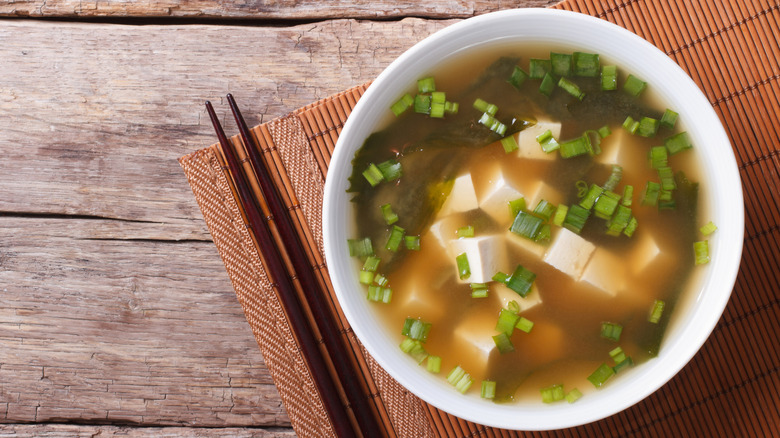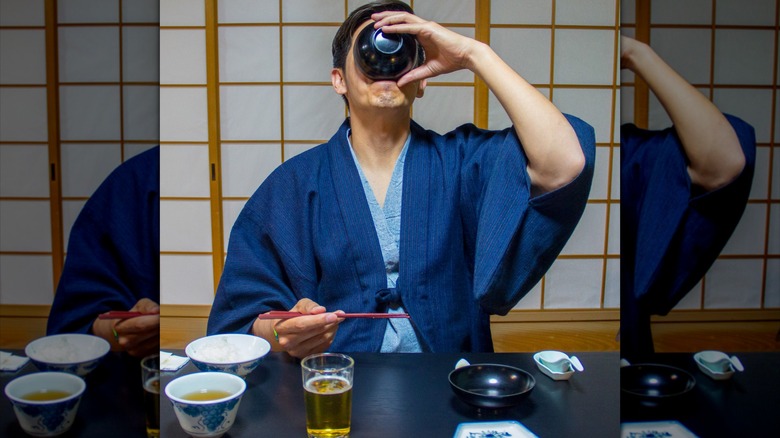The Big Mistake People Make When Eating Miso Soup At Japanese Restaurants
Miso soup is a great addition to any meal. It's the start to the easiest breakfast ever, an excellent add-on to lunch, and the perfect umami accompaniment to a delicious dinner. Miso paste isn't just for soup, either; there are tons of creative ways to use it. But zeroing in on the tried-and-true soup itself reveals that not everyone knows how to eat it the Japanese way. You might be making the same mistake when you're out at your favorite restaurant without even knowing it. It's an easy one to make, after all: it's just eating your miso soup with a spoon.
In Japan, many of the soups are made with thin and light broths. The bowls these soups are served in also tend to be on the smaller side, making them the perfect vessels for a good, sip-able soup experience. This is true of miso soup, which has a particularly watery base and not much in it outside of seaweed, green onions, and chunks of tofu. When trying to eat those larger pieces, you can use your chopsticks instead of reaching for a spoon or struggling to slurp them up, but in most cases, the ingredients will be cut down to a size that you may be able to sip up anyway.
Diving into the history of miso soup
Miso itself has a rich history that is deeply intertwined with Japanese culture and dates back over 1,300 years. It likely originated as a fermented food in China and was a method of preservation that soon became deeply tied to the culture of the nation. It went from being a dried condiment used for snacking and eating alongside other food to miso soup thanks to Zen monks during the Kamakura period (1185-1333), who would grind the miso in a mortar and add hot water much in the way miso soup is still made to this day.
These monks tended to live in simplicity, and their meals reflected this. That goes for the ingredients they used and the way they ate alike. The addition of miso soup into the diet complemented their notion of Ichiju Issai (one soup, one dish), which focuses on a meal that has soup, a main dish, a staple grain, and pickles. Because the bowls were small and more like cups, holding them and sipping the contents like tea became the go-to method of eating miso soup. That's also why the bowls are often made with light material that won't overheat, so you can easily pick up and hold them. Next time you head to your favorite Japanese restaurant, you can eat your miso soup knowing there's a rich history behind the lack of spoons and enjoy the experience in a more traditional way.

